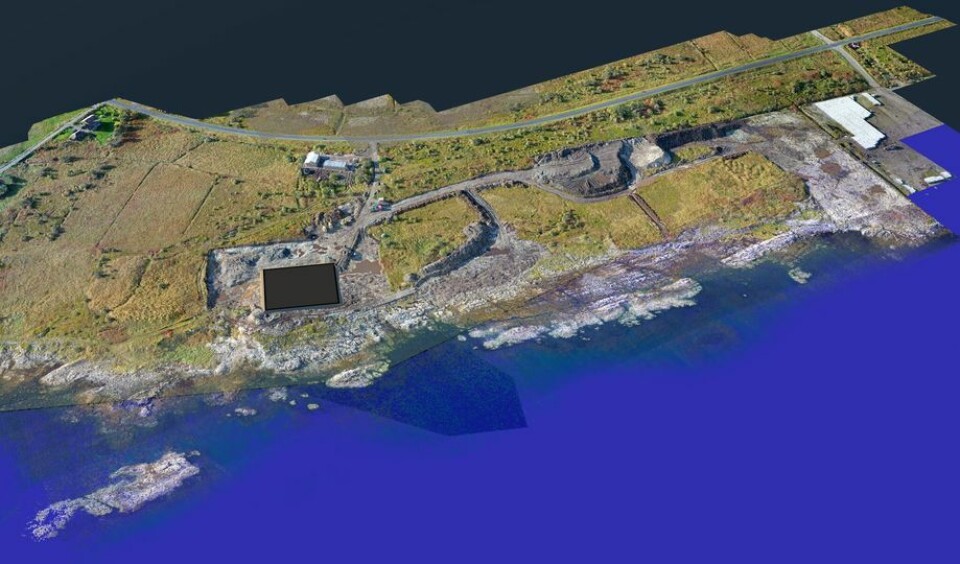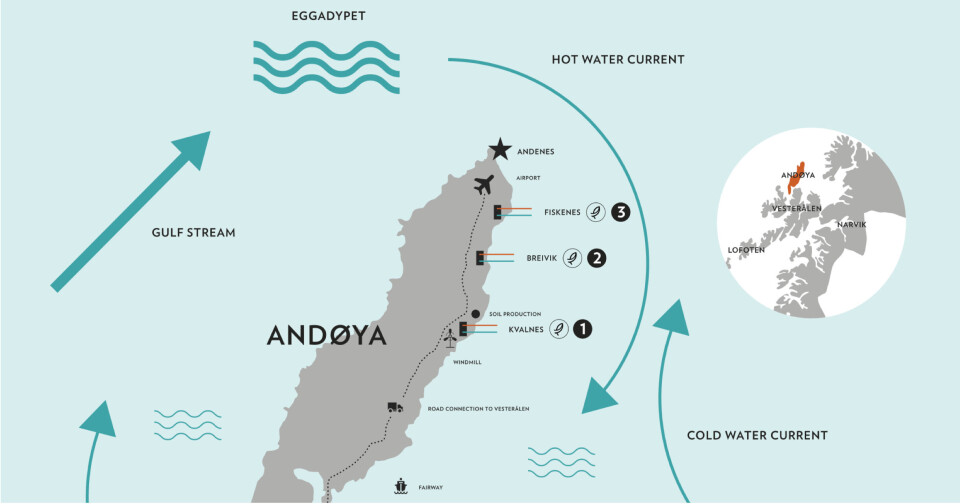
On-land salmon farmer valued at NOK 1 billion
A Norwegian company building an on-land salmon farm that will use solar and wind power to supply its energy needs has passed NOK 1 billion (£83.6m) in market value, even though it has yet to put a fish in the water.
Andfjord Salmon reached NOK 1bn milestone after its shares were traded at NOK 35 on the NOTC, an Oslo Stock Exchange-owned marketplace for unlisted shares, yesterday.
It follows news last week that Andfjord had received NOK 14 million in support from Innovation Norway.

70,000-tonne ambition
Andfjord is building a 10,000-tonne capacity on-land salmon farm at Kvalnes on Andøya, the northernmost island in the Arctic Archipelago of Lofoten.
It has plans to increase capacity to a total of 70,000 tonnes by building plants at two other Andøya sites, Breivik and Fiskenes.
Andfjord’s concept is to deeply excavate sites so that its fish tanks sit below sea level.
Flow-through system
Sea water will be pumped up from a depth of 160 metres (winter) or 30 metres (summer) by pumps with a low energy requirement.
Unlike the majority of on-land projects that rely on a recirculating aquaculture system (RAS, the company is using a flow-through system, which it says ensures an equal distribution of oxygen. The flow rate will provide a total change of water every 90 minutes, which Andfjord says prevents the formation of hydrogen sulphide because there is no sludge build-up.
“The patented intake solution has the great advantage that the water flow does not go in a circle, as in a backwater in a river,” says Andfjord in a Frequently Asked Questions section on its website.
“As a result, stools do not swirl and feed in many different water layers, but naturally fall to the bottom. There, all waste is effectively removed. In short, you can say that we are recreating a completely natural and clean environment for salmon, where the current behaves as it does in a good sea location in the sea.”
No lice or algae
Andfjord adds that there will be minimal risk of escapes, salmon lice or algae problems.
“All of our intake is under the areas where photosynthesis occurs and where salmon lice and dangerous algae live,” the company says.
“In addition, we can close inlets that are at risk of sucking in unwanted items. The technology and depth thus minimise the problems associated with salmon lice and algae. In addition, filtering will be established that will capture unwanted elements in the system.”
Residues recycled
Waste residues will be used by a neighbouring company, Andøytorv, that will utilise the waste and feed residues in the peat and soil products it supplies to garden centres.
Andfjord is currently building a 1,000-tonne capacity pilot tank at Kvalnes and 10 other tanks on the site. The company plans to set out approximately 260,000 smolts in the second quarter of next year.






















































